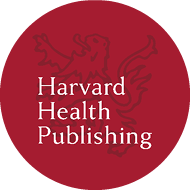Addressing Housing Instability to Improve Healthcare Use
A growing number of healthcare organizations recognize that people who experience housing instability or homelessness have more frequent emergency room visits and overall higher healthcare usage and costs than their more housing-stable counterparts. An article in Health Affairs reinforces this connection. Low-income individuals and families may also use the emergency department (ED) as a shelter when they have nowhere else to go; this can take a big toll on an organization’s bottom line, since the federal Emergency Medical Treatment and Labor Act (EMTALA) requires anyone coming to an ED to be treated, regardless of their insurance status or ability to pay.
In an effort to address these challenges, some health systems are broadening their efforts beyond providing medical care—they are also ensuring the people they serve have safe and affordable housing options. The hope is that this will help improve their overall health and will prevent them from seeking unnecessary care that can strain their local healthcare facility. Having access to a range of affordable housing efforts can also result in safer and healthier communities, so everyone benefits.
Improving Healthcare Access by Addressing Housing Instability
Bon Secours is one health system that has expanded its focus from treating people when they are ill to helping ensure they have a supportive and nurturing environment—including a safe and affordable place to live—to help them stay well.
Bon Secours has focused on creating accessible housing in Baltimore, Maryland, for more than a decade. But in 2019, the leadership was at a crossroads when they recognized that the system’s medical services were being underutilized by the community due to a number of challenges. These included high rent prices that were causing people to move out of the area and high local crime rates and drug markets that made people feel unsafe coming to the hospital.
This ultimately led Bon Secours to sell its Baltimore hospital and concentrate the bulk of its efforts on Bon Secours Community Works, a communitywide initiative that addresses the broader economic challenges and root causes of housing instability that are also connected to health. George Kleb, Executive Director of Housing and Community Development for Bon Secours Community Works, explained that the organization tackles these goals by turning vacant buildings into affordable and supportive places to live.
Now Bon Secours Community Works owns 801 affordable housing units that may be occupied by area residents, including low-income families, people with disabilities, and seniors. All of the residents have access to a service coordinator who helps connect them to important resources—from COVID-19 vaccines and flu shots to career support, to help navigating public assistance for food and expenses, to transportation and preventative medical services. The housing units also have wrap-around services on site for residents to make their lives easier, including internet access and computers, washers and dryers, and a fitness center.
This model brings many benefits to the people served, including improved stability, reduced exposure to environmental hazards, better access to preventive care, and lower out-of-pocket expenses. In addition, the community as a whole has benefited from fewer vacant buildings, which can translate to safer neighborhoods.
While the impacts of this effort are multi-fold, a study in Health Affairs reveals that for every dollar spent on annual operating costs, Bon Secours’ housing program brings between $1.30 and $1.92 social return (referring to the economic, environmental, and social benefits to the community) on their investment.
Affordable Housing Can Reduce Unnecessary Healthcare Use
Nationwide Children’s Hospital in Columbus, Ohio, also supports affordable housing efforts to create safer neighborhoods.
While Nationwide Children’s serves young patients from all over the country, they are also a hospital for local children, almost 40 percent of whom are on Medicaid. That’s why in 2008, the hospital ramped up its investment to improve the conditions local children face. The catalyst for these efforts was a hospital expansion into a new neighborhood. Residents and staff there were affected by a host of pressing problems, including vacant homes, high rates of crime, drug dealing, and an overall lack of connectedness between residents, the hospital, and other local institutions.
Ultimately, this led Nationwide Children’s to partner with a local organization to create Healthy Homes, a nonprofit that builds new affordable housing units and renovates existing properties in need of work. The hope was that by improving living conditions, children and families would be able to focus on caring for health and avoid unnecessarily visiting the ED.
“As of 2021, Healthy Homes had brought investments of over $50 million to a 52-block area in the South Side [of Columbus], helping to build or improve over 450 homes. Just as important, the hospital had cultivated a wide range of partnerships across the area—with government, non-profit, and for-profit groups. And it had gained real trust and credibility among local residents,” pointed out Nick Jones, Vice President of Community Wellness at Nationwide Children’s Hospital.
An article in Pediatrics paints a picture of the vast impact these efforts have had. For instance, Healthy Homes has provided grants to 243 homeowners to make exterior home improvements; it’s also rehabbed 149 existing homes and built 69 new homes (with some sold as affordable units and the rest rented). These efforts have reduced the proportion of vacant homes in the neighborhood from 25% to below the community average of 6%. ED visits and in-patient stays for children in the neighborhoods served by Healthy Homes decreased compared with other local neighborhoods. And the local high school graduation rate has increased from 64% to 79%. All of this illustrates how children’s and families’ well-being can improve with a safe and affordable roof over their head.
“Upstream investments to address the social determinants of health can make a long-term, sustainable difference in health outcomes,” Jones stressed. This means that when families have a safe place to live, everyone benefits.
Related Stories
Subscribe
Keep up with our latest news, research, and stories.
Subscribe to financial alerts on our investors site

